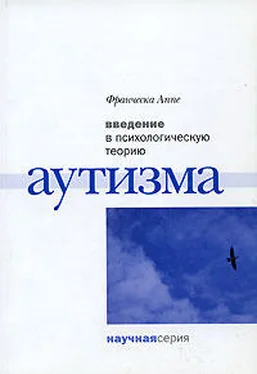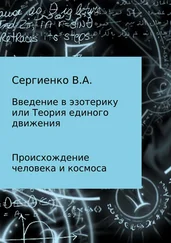Нейровизуализация 51-53
Нормальное развитие 32, 41, 54, 66–68, 77, 91, 94, 99, 102, 104–106, 165
Обман 68, 78–80, 85, 113, 115, 117–119, 165
Обучение 21, 25–26, 29, 31, 40–41, 44, 55, 66, 72, 110, 116, 134, 159, 160–161, 163
Особые (необычные, специфические, стереотипные, узкие) интересы 21, 23–24, 59, 122, 124, 132, 137–138, 141, 145, 158-159
Особые (выдающиеся, необычные, специальные) способности 17, 34, 65, 67, 96, 71, 76, 131, 143, 163, 167, 174, 181
Память 12, 21–22, 26, 65, 77, 122, 167, 181, 183
Первичная репрезентация 61, 65
Первичное нарушение 38, 76–77, 82–83, 85–86, 88, 90, 93, 95–96, 139, 179
Подражание 36, 38, 56, 93-95
Подтипы аутистов 86, 139–140, 143–144, 148
Правополушарные когнитивные нарушения 135, 154-155
Причинно-следственные модели 11–12, 64
Прогностические исследования 39, 41
«Психическая слепота» 62–63, 71, 73, 97, 164, 166, 168
Психические нарушения 22, 34, 123, 138
Психогенный миф 45
Ранние признаки аутизма 38–41, 89, 95
Репрезентация внутренних представлений 60, 63, 67, 69–71, 75, 77–88, 90-100, 102–103, 108–112, 116, 119–120, 157, 164–168, 176–180, 183
см. также считывание внутренних представлений, модель психического
Ретроспективные исследования 39
Речь 15, 21, 24, 26, 32–33, 36–37, 40, 43, 48, 55, 57–58, 65, 77–78, 101, 106, 108, 112, 121–123, 126, 128–131, 134–140, 142, 144, 149, 152–155, 158–160, 166, 169, 177, 180-181
Семантико-прагматическое нарушение 152–154
Семья 22, 133–135, 184
Символическая игра 32, 42, 58–59, 61–62, 68, 90, 94, 113, 118, 122, 129, 138, 150, 152, 160, 166
Симптомы 12, 20, 22, 28-29, 31, 55, 71, 75, 90, 125–126, 137, 139, 141, 146, 153, 155, 156
Снижение интеллекта и, 17, 21, 47, 99, 124, 133–135, 169, 172
Совместное внимание 89–91, 122
Соотношение (распределение) полов 43, 48–49
Сопереживание 122–123
Сопротивление изменениям 23, 124, 183
Сохранные способности 12, 24, 50–51, 55, 58, 65, 76, 97, 129,167, 172, 174, 178
Социализация 33, 35, 91, 96–97, 108, 124, 136, 150, 180, 182
Социальная принадлежность 44
Стереотипии 22, 29, 37, 121, 123, 138
Считывание внутренних представлений 60, 63, 71, 74, 98, 108
см. также репрезентация внутренних представлений, модель психического
Теория релевантности 112
Терапия, критерии оценки 161–163
Тест
· «Вложенные фигуры» 179-180
· «Конструирование из кубиков» 172, 175, 177, 179-181
· «Наборная доска» 138
· «Удивительные истории» 118-119
· «Чтение омографов» 173–174, 176, 182
Тесты ложных ожиданий 63, 65–68, 70–71, 77-79, 81–85, 87–88, 98-99, 103, 105–106, 108, 110, 113–114, 116, 119
Триада Wing 33–35, 42-43, 55, 60, 64, 72, 75, 83, 86, 96–97, 149–151, 164, 167, 178, 182
Узнавание эмоций см. восприятие эмоций
Указательный жест 42, 66
Уровни объяснения 10–13, 45, 74, 77
Фрагильная (ломкая) X-хромосома 11, 49,
Функция программирования и контроля 80, 82, 85–88, 139, 179-180
Центральное согласование 169–180, 182–183
Чтение 12, 52, 174, 176
Шизоидное личностное расстройство 133, 156-159
Широкий аутистический фенотип 49, 179
Эпидемиология 29, 31, 42, 44, 130, 143
Эпилепсия 44, 47, 50
Aarons, М. & Т. Gittens 1991. The handbook of autism. London: Tavistock/Routledge.
Adams, C. & D. V. M. Bishop 1989. Conversational characteristics of children with semantic-pragmatic disorder. I: Exchange structure, turntaking, repairs and cohesion. British Journal of Disorders of Communication 24, 211-39.
Adrien, J. L., M. Faure, A. Perrot, L. Hameury, B. Garrau, C. Barthelemy, D. Savage 1991. Autism and family home movies: preliminary findings. Journal of Autism and Developmental Disorders 21, 43-51.
Aitken, K. 1991. Annotation: examining the evidence for a common structural basis to autism. Developmental Medicine and Child Neurology 33, 930-38.
American Psychiatric Association 1980. Diagnostic and statistical manual of mental disorders, 3rd edn. Washington, DC: American Psychiatric Association.
American Psychiatric Association 1987. Diagnostic and statistical manual of mental disorders, 3rd revised edn. Washington, DC: American Psychiatric Association.
Appiah, P. (ed.) 1969. The pineapple child and other tales from the Ashanti. London: Andre Deutsch.
Asperger, H. 1944. Die «Autistischen Psychopathen» im Kindesalter. Archw fir Psychiatrie und Nervenkrankheiten 117, 76-136.
Asperger, H. 1979. Problems of infantile autism. Communication 13, 45-52.
Astington, J. W. & A. Gopnik 1991. Theoretical explanations of children's understanding of the mind. British Journal of Developmental Psychology 9, 7-31.
Attwood, A. H., U. Frith, B. Hermelin 1988. The understanding and use of interpersonal gestures by autistic and Down's syndrome children. Journal of Autism and Developmental Disorders 18, 241-57.
August, G. J., M. A. Stewart, L. Tsai 1981. The incidence of cognitive disabilities in the siblings of autistic children. British Journal of Psychiatry 138, 416-22.
Aurnhammer-Frith, U. 1969. Emphasis and meaning in recall in normal and autistic children. Language and Speech 12, 29–38.
Avis, J. & P. L. Harris 1991. Belief-desire reasoning among Baka children: evidence for a universal conception of mind. Child Development 62, 460-7.
Ballotin, U., M. Bejor, A. Cecchini, A. Martelli, S. Palazzi, G. Lanzi 1989. Infantile autism and computerized tomography brain-scan findings: specific versus nonspecific abnormalities. Journal of Autism and Developmental Disorders 19, 109-17.
Baltaxe, С. A. M. 1977. Pragmatic deficits in the language of autistic adolescents. Journal of Pediatric Psychology 2, 176-80.
Baron-Cohen, S. 1989a. The autistic child's theory of mind: a case of specific developmental delay. Journal of Child Psychology and Psychiatry 30, 285-97.
Baron-Cohen, S. 1989b. Perceptual role taking and protodeclarative pointing in autism. British Journal of Developmental Psychology 7,113-27.
Baron-Cohen, S. 1989c. Are autistic children behaviourists? An examination of their mental-physical and appearance-reality distinctions. Journal of Autism and Developmental Disorders 19, 579–600.
Читать дальше
Конец ознакомительного отрывка
Купить книгу












